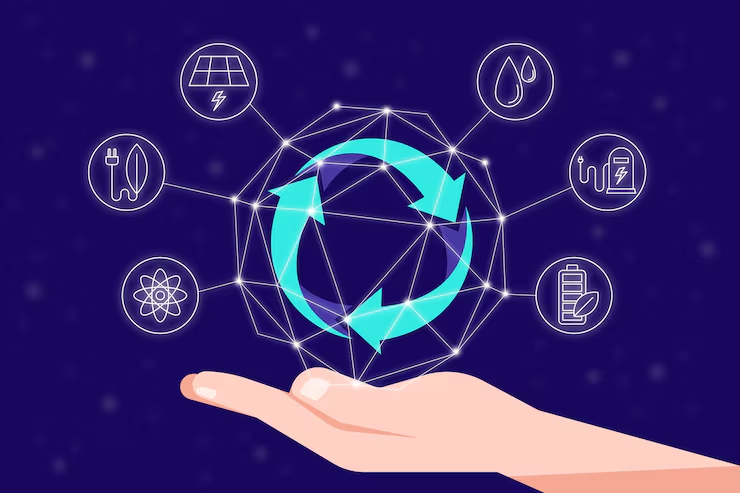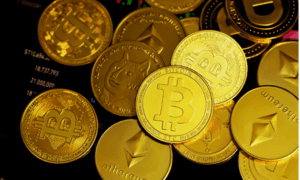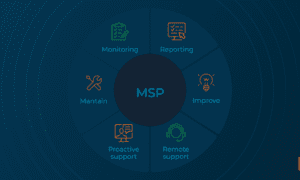Electronic devices have become part of our fast-paced lives in a way we would never have imagined 10 years ago.
The average person has more devices than before, and the large range includes smart appliances, wearables, laptops, and, of course, smartphones.
Electronic waste, or rather e-waste, has become a global challenge amidst the continuous growth and convenience of the technological advancements that are being made.
One of the fastest growing waste material sources worldwide is the process from production to disposal, recovery, or recycling of e-waste.
As technology develops, consumers constantly upgrade their devices, which results in the discarding of many millions of tons of electronics.
There is a brand-new model emerging, a model that not only aligns with the circular economy but also gives a second life to electronics, which is possible due to data-driven platforms and advances being made in technology.
1. The Growing E-Waste Problem in a Connected World
There is no second-guessing needed here!
In 2019 alone more than 50 million metric tons of e-waste were generated, according to the Global E-waste Monitor.
And it’s no surprise that in 2030 an approximate 74 million metric tons is expected to be counted as e-waste.
This number is estimated due to the rapid turnover of electronics, at a rate of approximately 8 kg per person per annum, for either replacing or discarding.
Due to software updates, ever-changing features, and the demand for the latest models by consumers, tablets, laptops, and smartphones are to a greater degree designed to have a shorter lifespan.
The acceleration of e-waste is further escalated by smart home tech, wearables, and e-vehicles.
Drop-off bins and municipal e-waste programs designed for recycling in the traditional way are not able to keep up with the processes.
There usually aren’t real economic incentives for proper recycling, which ultimately results in a lack of efficiency, sense of responsibility, or traceability.
Toxic chemical leaks, which lead to environmental harm and resource loss, result from many devices being improperly discarded.
2. The Rise of Reverse Supply Chains
Reverse supply chain networks are being used by businesses to manage the redistribution of used products, refurbishing, repairs, and returns to meet the challenges they face.
Reverse supply chains work in the opposite way to traditional supply chains, which usually move products from manufacturers to consumers.
For example, let’s look at Apple’s Trade-In Program.
To qualify for credit towards their Apple purchases, consumers can return their old devices.
These returns would either be recycled in a responsible way, or they could be refurbished.
Systems that take back old equipment for reusing components have been made possible by other companies too, for example, HP and Dell.
Data center decommissioning also plays a critical role in the reverse logistics process in other large companies.
Rather than letting e-waste end up in dumping grounds, decommissioning ensures that old hardware is either recycled or properly wiped to be resold for reuse.
These operations managed to ensure reverse logistics provides significant business benefits, plus it helps reduce waste.
By harvesting usable parts, companies can lower their costs, build stronger relationships with environmentally conscious customers, and, in the process, meet sustainability targets.
3. Technology as the Enabler
To enhance traceability, decision-making, and customer engagement, technology, and in particular, digital tools are being used to enhance the transformation of e-waste.
In tracking the lifecycle of devices, artificial intelligence (AI) and data analytics are being successfully used.
To prevent products from failing, AI can be used to suggest trade options or to identify required repairs proactively.
The lifespan of products can be significantly extended due to these predictive capabilities.
From the re-manufacturing, resale, and recycling, blockchain technology is used for transparency and to ensure tamper-proof records of a product’s journey.
The way they handle e-waste ensures there is accountability and trust is built among stakeholders.
Users are in a position to check warranties, participate in buy-back programs, and initiate returns through certain mobile apps that are available.
Some companies have a simple process that can be followed to send in old devices and receive instant credit, which also encourages responsible disposal; for example, Samsung’s app-based trade-in service.
4. Circular Economy Meets Digital Innovation
Digital innovation is enabling the idea of a circular economy, where products are reused, refurbished, or recycled rather than discarded.
Ecosystems are being created that connect manufacturers, consumers, recyclers, and repair services, and this is all done by developers and digital platforms.
There is a great marketplace available for refurbished electronics that also offers quality assurance and warranties, giving consumers confidence in secondhand devices, and it’s called Back Market.
Companies like Vodafone, in the telecom sector, are integrating circular practices by offering device leasing models, AI-driven customer support for repairs, and recycling programs.
Platforms like the Reuse program and Cisco’s Takeback are giving enterprise equipment a longer life while reducing environmental impact when it comes to IT hardware.
These advancements also benefit data center decommissioning.
To ensure sensitive data is handled securely and valuable materials are recovered efficiently and to allow enterprises to track the dismantling and resale of large IT systems, there are specialized platforms available.
5. Opportunities for Businesses and Developers
The rise of reverse logistics presents a wave of opportunity for app developers and tech entrepreneurs alike.
Apps that are able to streamline returns, track device condition, or guide consumers through recycling steps are in big demand.
It’s not just something we think might be a good idea; rather, it has become a necessary smart business move to have sustainability embedded into software.
In general, governments are introducing stricter regulations around e-waste management, and consumers are increasingly choosing brands that prioritize the environment.
There is an array of prospects available, for example, AI-driven marketplaces for repairs and resale, subscription-based models (for electronics for returns and reuse), and smart recycling apps that offer pickup scheduling and reward systems.
Conclusion
The solution to e-waste lies in the latest technology.
The lifecycle of electronics is being reimagined through blockchain, user-friendly apps, AI, and data analytics.
The new circular approach is more sustainable than the old system of simply disposing of e-waste.
With this system, consumers get more value from their devices, the planet benefits from reduced pollution and resource conservation, and businesses reduce costs and build loyalty from their customers.
Technology is moving and changing at a never-before-experienced pace, which requires a circular economy for a sustainable future.



































